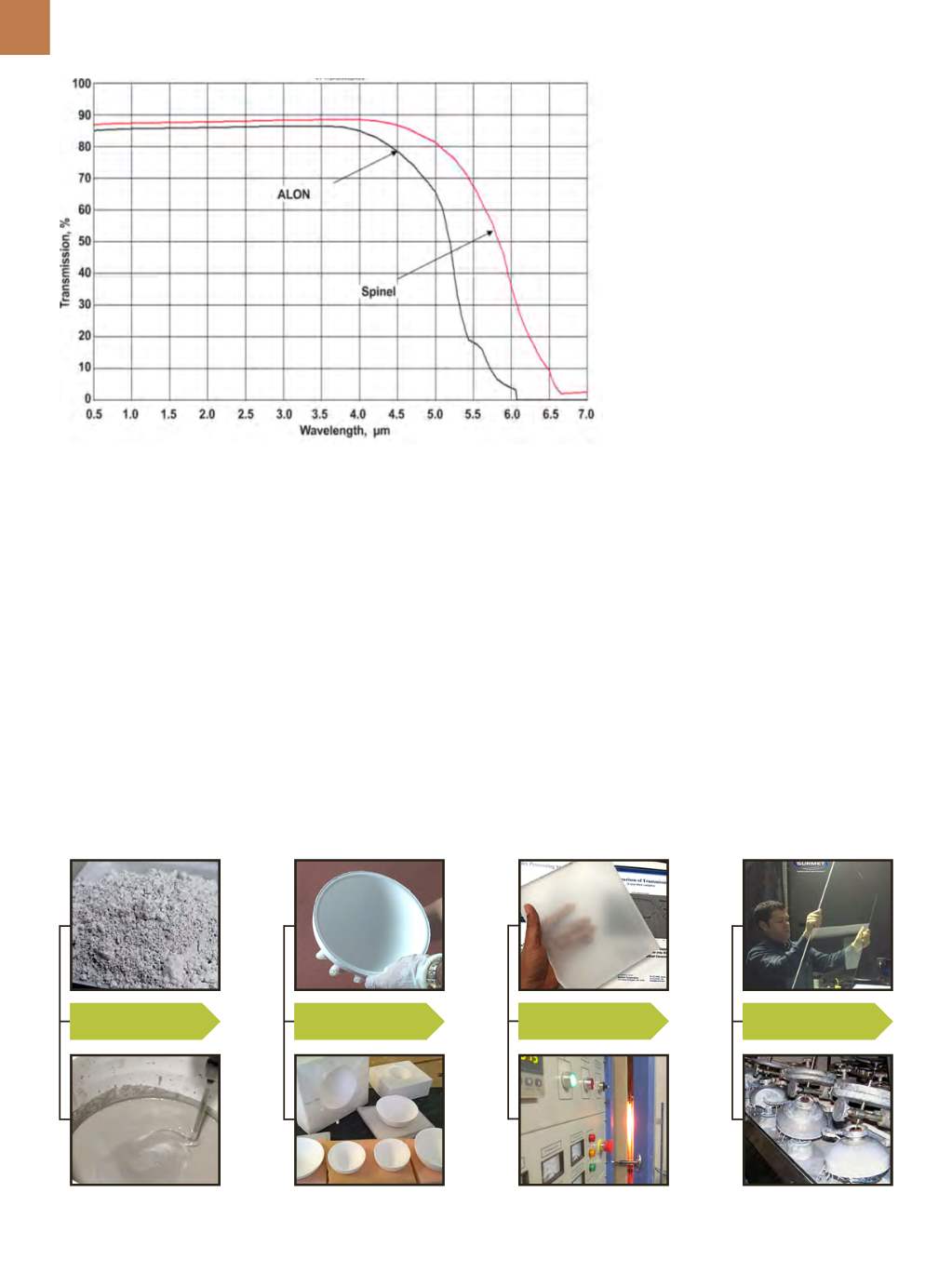

A D V A N C E D M A T E R I A L S & P R O C E S S E S | N O V E M B E R / D E C E M B E R 2 0 1 5
2 6
transparency presents several chal-
lenges that require additional critical
steps. Certain physical and chemical
requirements must be met in order to
achieve full transparency. For example,
transparent materials cannot have any
features that are large enough to scat-
ter light in the wavelengths of interest,
mainly in the visible range. Some of
these requirements include:
1. >99.9% density—Porosity that is
larger than roughly 40 nm causes
light to scatter.
2. Ultra high purity—The presence of
impurities, such as a few ppm of
transition metals, imparts color or
tint into the part.
3. Clean microstructure—No secondary
phases at the grain boundaries.
Microstructural defects such as pores
or bubbles also result in inclusions.
To get an idea of the difficulty of
achieving these requirements for ce-
ramics, first consider a powder metal-
lurgy example: Imagine starting with
micron to submicron size metal or alloy
powder, compacting it into a shape,
and then heat treating it to nearly full
density with absolutely no microstruc-
tural defects on the scale of tens of
nanometers. This is quite challenging
even for metals, in which plastic defor-
mation takes place and less complex
chemistries and diffusion mechanisms
are involved. In addition, much lower
sintering temperatures are needed for
metals versus ceramics. The process is
orders of magnitude more complex for
transparent ceramic materials, requir-
ing tens of millions of dollars and more
than a decade of effort to transform it
from a laboratory invention into a via-
ble commercial product.
Figure 3 depicts the key steps in-
volved in transparent ceramics manu-
facturing. In any powder-based meth-
od, a robust process begins with a
consistent and reliable powder supply
with the appropriate characteristics.
The manufacturing process for ALON
is reliable and repeatable, so it can be
produced with consistently higher qual-
ity and in larger quantities and larger
sizes than Spinel.
One of the contributing factors to
ALON’s robust manufacturing process
is that Surmet Corp. synthesizes its
own powder with consistent charac-
teristics. In contrast, Spinel powder is
sourced from an outside supplier and
exhibits inconsistent quality and reli-
ability, which has inhibited its progress
in terms of reproducibility and scalabil-
ity. Although Spinel has been available
for nearly 50 years, manufacturers still
struggle to consistently produce parts
as small as 12 × 12 in. with reasonable
Fig. 2 —
Transmission spectra of ALON and Spinel; 2-mm-thick sample with no anti-reflection
coatings.
Fig. 3 —
Key steps in manufacturing transparent polycrystalline ceramics.
Powder preparation
Greenware formation
Grinding and
polishing
Densification/
heat treatment


















